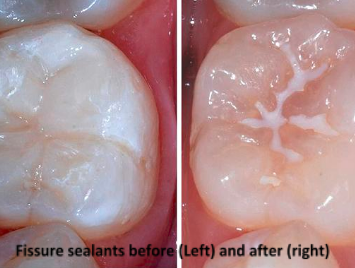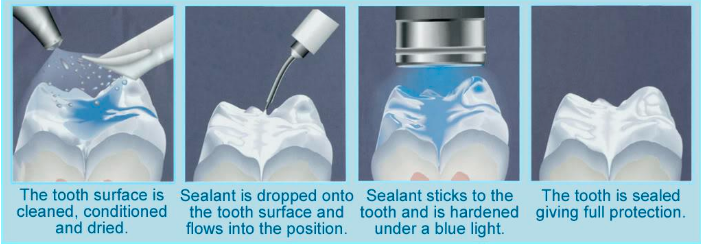Baby And Toddler’s Health – Part 4
Baby And Toddler’s Health Part 1
Baby And Toddler’s Health Part 2
Baby And Toddler’s Health Part 3
This post is a continuation to part 3 of this article.
Tooth decay occurs when food particles or acids are left on the teeth after eating and are not brushed away, this softens the enamel until a hole or decay forms.
Even babies can develop tooth decay if good feeding habits aren’t practiced. Putting a baby to sleep with a bottle might be convenient but it can harm your baby’s teeth. When the sugars from juice or milk remain on a baby’s teeth for hours, they can eat away at the enamel, this leads to a condition known as nursing bottle decay. Pitted or discoloured front teeth are signs of decay. Kids with severe cases might need all their front teeth pulled out (permanent teeth will still grow later if present).
Parents and childcare providers should help young children set specific times for drinking each day because sucking on a bottle throughout the day can be equally damaging to young teeth. Babies as young as 6 months are encouraged to switch from a bottle to a “Sippy cup” (with a straw or hard spout). By 12 months of age, they’ll have the motor skills and coordination to use the cup on their own.
Top tips to stop decay
- Start teaching your children good oral habits early. Brushing their teeth at least twice a day with fluoride toothpaste and flossing regularly.
- The regular use of fluoride helps toughen the enamel, making it harder for acid to penetrate the tooth. Most towns tap water is fluoridated, but some are not. If your water supply is not fluoridated or if your family uses purified water, ask your dentist for other ways to get fluoride. Most toothpastes contain fluoride, but toothpaste alone will not fully protect a child’s teeth.
- Sugary foods, juices, lollies (especially sticky gummy lollies, lolly vitamins, or fruit leather or “roll-ups”) can erode enamel and cause decay. If your kids eat these foods, make sure they rinse their mouth after eating to wash away the sugar. If they are taking sweetened liquid medicines, always have your child rinse afterward.
- Ask your dentist to put “fissure sealants” on your child’s teeth
Fissure Sealants
One of the most common area’s children get decay is in the grooves of their back molar and premolar teeth. This is because these teeth have ‘pits’ (small hollows) and ‘fissures’ (grooves) on their biting surfaces. An excellent and essential way to prevent decay from destroying your teeth is to get your teeth sealed with a “Fissure Sealant”.
Fissure sealants are a coating that fills in the natural grooves of the teeth to protect them from dental plaque and acids thereby reducing the occurrence of tooth decay.


Fissure Sealants are very easily applied and only take a few minutes each to complete. The child lies back in the chair and the area of the tooth being sealed is padded out with cotton wool rolls, absorbent pads, a salivary ejector or a rubber dam- whatever is necessary to keep it dry and isolated from saliva.
The tooth is cleaned and washed with a brush or cup (sometimes using pumice) to remove any plaque and food debris. A special blue gel is placed on the tooth. This is a mild dental acid that etches the tooth. This is then washed off thoroughly with water. The dental assistant will use suction to remove the water.
The tooth will have a frosty appearance, so you know that it has been etched properly. The fissure sealant then flows like paint into every part of the pattern of the tooth (all the pits and grooves). The material is then set hard (or ‘cured’ as the dentist would say) by the dental assistant with a special blue dental light and the bite will be adjusted if it is too high.
Generally, the tooth will feel a little spongy to bite on, but it will wear and feel normal again within a couple of days. This process is then repeated on all necessary teeth being fissure sealed.

Snack Time
Fissure sealants are a great preventive measure to stop decay but there are also dietary recommendations that you can follow to prevent decay as well. The less sugar you eat, the lower your risk of cavities. We all know that cakes and sweets contain sugar, but it is the ‘hidden’ sugars that can also be found in foods that we wouldn’t expect.
Three types of foods that can increase sugar in our diet are:
- Sweet items such as confectionary, chocolate, cakes, pastries and biscuits.
- Processed foods that contain added sugar such as cereals and cooking sauces
- Foods containing complex carbohydrates such as bread and pasta, which can release sugars in your mouth
Some other things to be aware of when limiting sugar intake are:
Fill Sippy cups with water only: Children shouldn’t sip on sugary drinks or munch on sugary foods for extended periods of time. If you give your child beverages other than water, serve them in a cup or glass and limit consumption time. If you do provide sugary drinks in sippy or other types of cups, instruct children to finish them quickly. Take away the cup after a reasonable amount of time.
Don’t let children go to sleep with bottles: Even milk can cause tooth decay. If you do put your child to sleep with a bottle, it should contain water only.
Limit lollies: Sucking on lollies is another way that kids can extend exposure to sugar. Limit sweets and the time it takes for kids to consume them, and make sure children brush afterward.
Don’t dip dummies: Never dip dummies in sweet substances, such as honey, jam or sugar.
Sugar-free: Ask for sugar-free medicines if possible.
Examine regularly: Look in your child’s mouth regularly to spot early signs of decay.
Both adults and children who snack throughout the day have a higher risk of developing tooth decay (dental caries). Oral bacteria digest the sugary substances, producing acid which then attacks the teeth. The frequency of consumption of these treat foods is more detrimental to the teeth than the quantity. It is less harmful to the oral tissues to eat these foods with a meal, rather than between meals.
Image Attribution –
